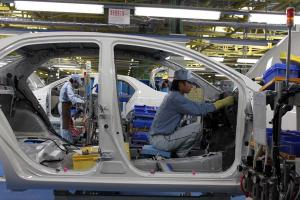
Toyota Central R&D Labs in Japan have reviewed research that might be leading the way towards a new generation of automotive catalytic converters.
Image: Bertel Schmitt/CC
Soon we may be able to better control pollution created by cars at the quantum level.
Researchers from the Toyota Central R&D Labs are conducting research that may lead toward a new generation of automotive catalytic converters.
The new catalytic converters differ from the typical toxic fuel filtering systems due to the new catalyst’s focus on metal clusters, which allows it to be controlled at the quantum-level.
“We can expect an extreme reduction of precious metal using in automotive exhaust catalysts and/or fuel cells,” says Dr. Yoshihide Wantanabe, chief researcher at the Toyota Central R&D Labs in Japan.
By focusing their research on metal clusters instead of the precious metals catalysts are typically formed from, the researchers see more organic catalytic reactions that occur naturally from some metal clusters.
This from the National Institute for Material Science:
His research indicates that catalytic activity is strongly affected by the electronic structure of clusters, their geometry on a support material, and the interaction between the cluster and the material. Thus, the catalytic activity of clusters can be enhanced by controlling cluster size and the interaction between the clusters and the support material. This is important, because enhancing the catalytic activity of some clusters may greatly reduce the utilization of precious metals as catalytic agents. A few studies that try to understand how the catalytic properties of size-controlled clusters are affected at the quantum level. Although several mechanisms for these effects are suggested, the field is still in progress.
Wantanabe recommends further studies to investigate how catalytic reactions are affected by temperature. He believes computational chemistry could lead to the development of quantum-controlled catalysts.
You can read the open access paper of which this article is based on here.
Want to learn more about catalytic converters? Head over to the Digital Library to read some of the top papers in this area.


